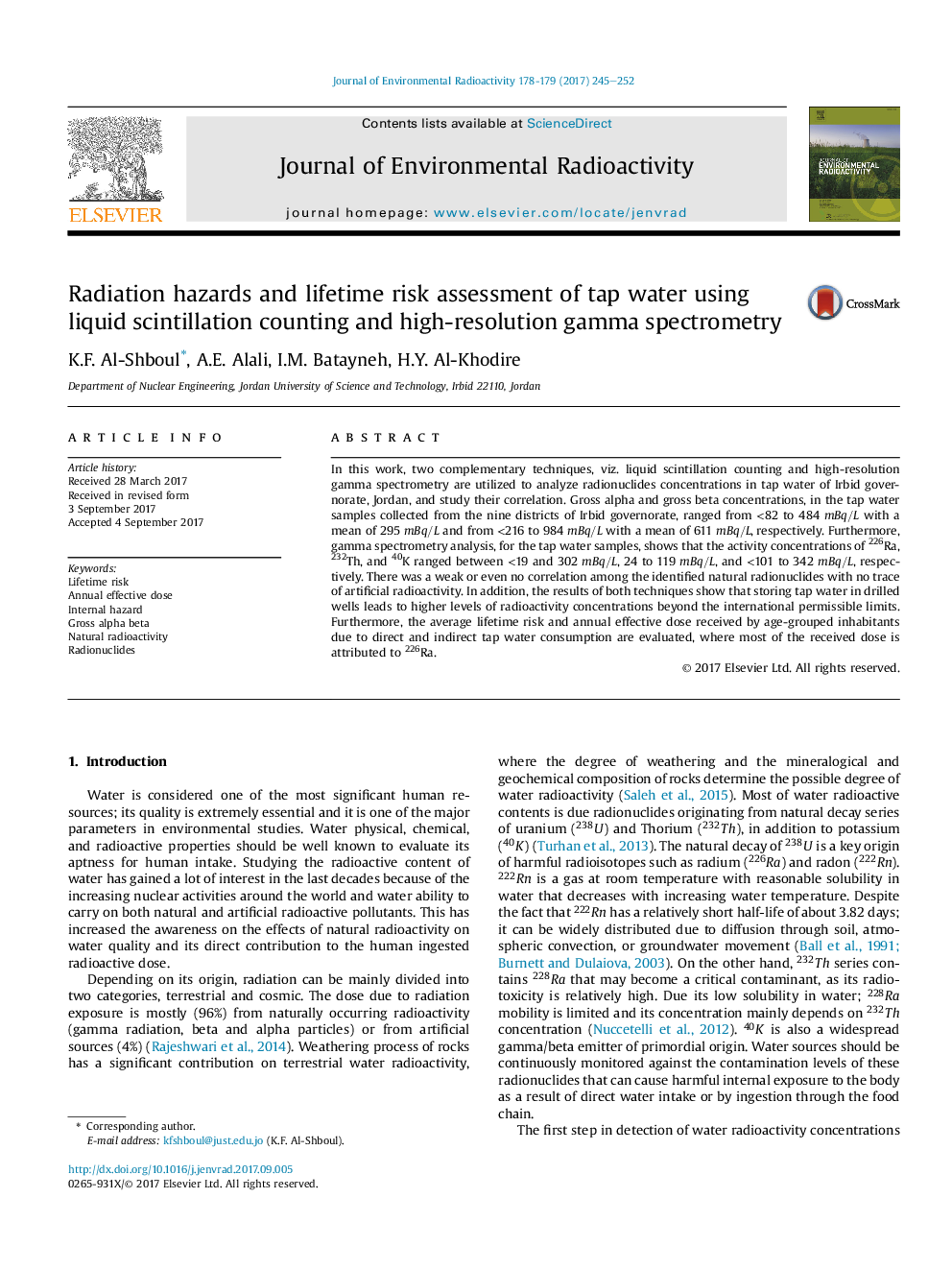| Article ID | Journal | Published Year | Pages | File Type |
|---|---|---|---|---|
| 5477440 | Journal of Environmental Radioactivity | 2017 | 8 Pages |
Abstract
In this work, two complementary techniques, viz. liquid scintillation counting and high-resolution gamma spectrometry are utilized to analyze radionuclides concentrations in tap water of Irbid governorate, Jordan, and study their correlation. Gross alpha and gross beta concentrations, in the tap water samples collected from the nine districts of Irbid governorate, ranged from <82 to 484 mBq/L with a mean of 295 mBq/L and from <216 to 984 mBq/L with a mean of 611 mBq/L, respectively. Furthermore, gamma spectrometry analysis, for the tap water samples, shows that the activity concentrations of 226Ra, 232Th, and 40K ranged between <19 and 302 mBq/L, 24 to 119 mBq/L, and <101 to 342 mBq/L, respectively. There was a weak or even no correlation among the identified natural radionuclides with no trace of artificial radioactivity. In addition, the results of both techniques show that storing tap water in drilled wells leads to higher levels of radioactivity concentrations beyond the international permissible limits. Furthermore, the average lifetime risk and annual effective dose received by age-grouped inhabitants due to direct and indirect tap water consumption are evaluated, where most of the received dose is attributed to 226Ra.
Related Topics
Physical Sciences and Engineering
Energy
Nuclear Energy and Engineering
Authors
K.F. Al-Shboul, A.E. Alali, I.M. Batayneh, H.Y. Al-Khodire,
